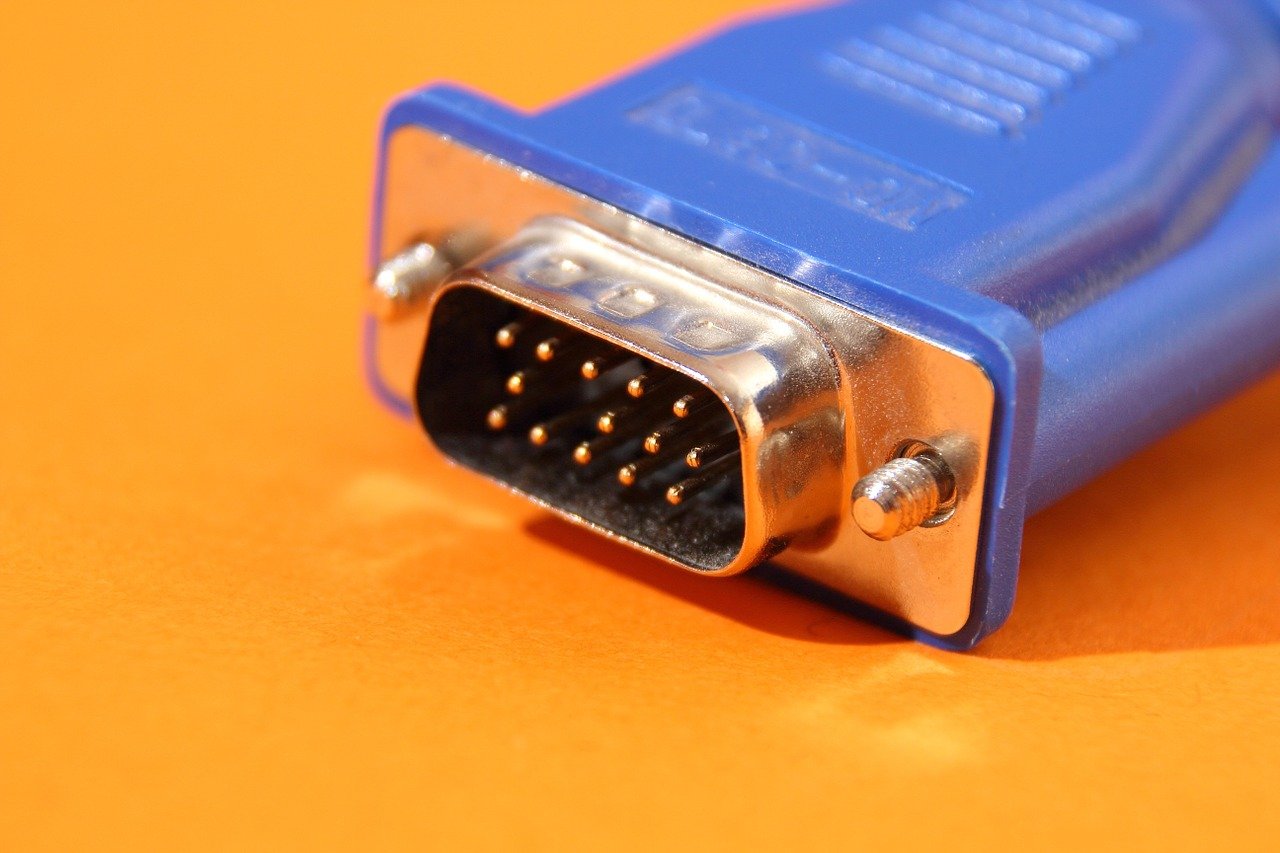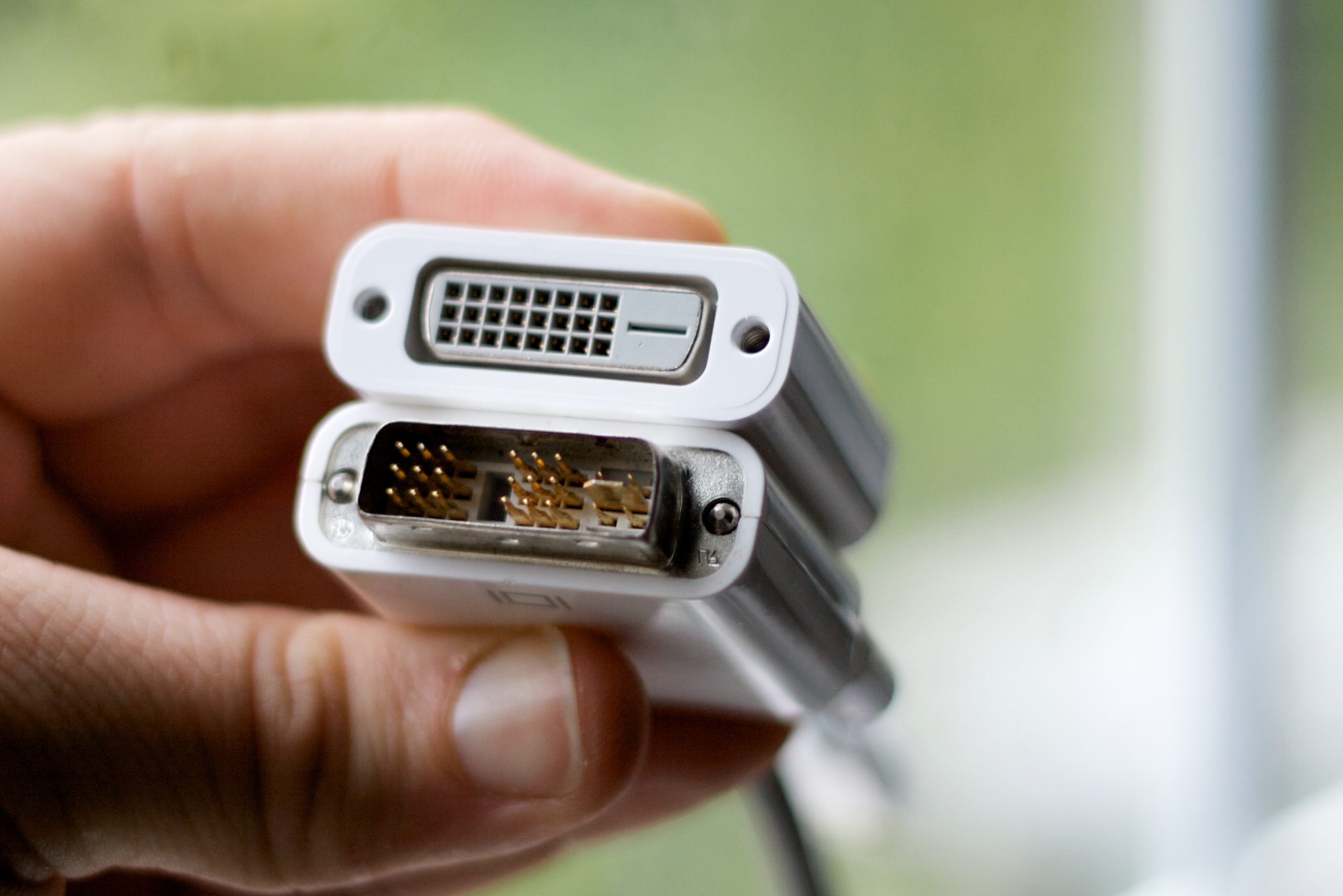With the increasing prices of computers and their peripherals, every user expects to get the best possible experience from it. One of the major factors that impacts the user experience is the screen’s ability to display sharp and smooth images with minimal delay.
That is why professional gamers and high-performance videographers require high monitor refresh rates.
A normal display device displays at a maximum of 60 Hertz (Hz). However, thanks to technological advancements, display devices are now capable of displaying at 75 Hz, 90 Hz, 120 Hz, 144 Hz, and even 260 Hz.
The supported refresh rate of a monitor contributes to the overall frame rate (FPS) you may be getting, along with other factors.
If you are experiencing low frame rates or stuttering issues during gameplay and other rendering tasks, this post discusses the key elements to consider, and the actions to perform to fix such issues.
Table of Contents
What is Refresh Rate
Refresh rate, measured in Hertz, is the ability of a device to load a new image within one second. The higher the refresh rate, the greater the number of images displayed in a second.
Different display devices can support different refresh rates. This is also one of the crucial factors that determines the frame rate you can achieve on this display. For example, a monitor with a refresh rate of 144 Hz can have a frame rate of 144 (144 images in a second).
That said, the frame rate is dependent upon other factors as well.
What is FPS
Frames Per Second, or FPS, can often confuse users with the refresh rate. This is because both define the number of images in one second. However, the refresh rate is directly associated with the hardware (monitor) and its ability to display those images, while FPS defines the actual number of frames in a second the particular monitor displays.
The supported refresh rate doesn’t need to mount for the same FPS since FPS depends on other factors like GPU performance, cable type, etc.
FPS is measured in, well, frames per second, which defines the number of images (frames) in one second (Duh!).
What is Response Time
Another important element to consider which is usually missed when you are looking for a new monitor to buy is its response time. The display device’s response time is measured in milliseconds (ms), determining its ability to shift colors. It is usually defined by changing its color from white to black, and then white again.
Ideally, a response time of under 5 ms is considered a good gaming response rate. However, many modern gaming monitors have a response time of 1 ms.
Advantages of High FPS
Improved User Experience
One of the more obvious advantages of having a higher refresh rate is the improved user experience. Shifting from a 60 Hz monitor to a 144 Hz monitor would be a big change for more detail-oriented gamers. The gameplay would become much smoother, hence more fun.
Reduced Ghosting
Another advantage of higher FPS is eliminating ghosting. Ghosting is a rippling effect, like a blurred tail following a moving object when objects on the screen move quickly. With more frames per second, your screen is refreshed more quickly with solid images, rather than displaying a shadow-like effect.
Reduced Screen Tearing
Reduced ghosting then results in reduced tearing. Tearing is where part of the actual display is “torn away.” Such a phenomenon occurs when a new image is partially loaded on the screen while the object(s) moves, and a portion of the screen is missing for a few milliseconds.

Reduced System Latency
System latency refers to the time it takes from a performed action to the time it is displayed on your screen. For example, the time (in milliseconds) it takes from clicking the fire button on your mouse to the time you see a shot fire on the screen.
With higher FPS, gamers can see their opponent(s) faster, thus reacting more promptly. Then, the CPU and GPU of your computer, which plays a critical role in processing the information from your peripherals to the display, can process the information faster, reducing the system latency.
GeForce has explained these benefits more vividly in graphical context. If you want more information on these advantages, read here.
Disadvantages of High FPS
“The more the merrier” is not the way to go with FPS. It is not necessary that higher frame rates are always ideal for you. There are downsides to higher frame rates.
Lower Resolution
Higher FPS often means lower screen resolution. This is often because display devices and cables have limiting factors that affect their support for FPS against screen resolution. Sometimes, a user needs to make a trade-off between higher FPS and lower resolution, or lower FPS and higher screen resolution.
This concept will become more clear when we discuss the supported FPS and screen resolution for different types of cables down in this blog post.
Overusing/Overheating System Resources
Another con of having higher FPS may be the overuse of system resources, such as the GPU. Overusing system resources can lead to overheating, reducing their life and affecting their performance.
However, this can only happen if you overlook these resources and make them go the extra mile to achieve your desired FPS.
Let us now continue to address the elephant in the room: How to increase FPS in Windows. But even before that, let us show you how to determine the current refresh rate and FPS, and how to change it without using any third-party software.
How to Check Monitor Refresh Rate in Windows 11/10
You can see what your monitor’s refresh rate is currently set to. Windows automatically detects what your display device(s) are capable of and configures an optimal refresh rate. You can check your current settings by navigating to the following:
Settings app >> System >> Display >> Advanced display
You can find the current refresh rate for the selected display device here. If you have multiple display devices connected, you can select a different one from the drop-down menu at the top of the Advanced display settings page.

How to Change Monitor Refresh Rate in Windows 11/10
Both Windows 10 and 11 allow you to manually change the refresh rate for your monitor from the Settings app. However, by default, they only give the options supported by the selected display device. You can choose from one of the given options to change its refresh rate.
Navigate to the following:
Settings app >> System >> Display >> Advanced display
Now select the device for which you want to change the refresh rate and then expand the drop-down menu under “Choose a refresh rate.” From there, select your preferred refresh rate.
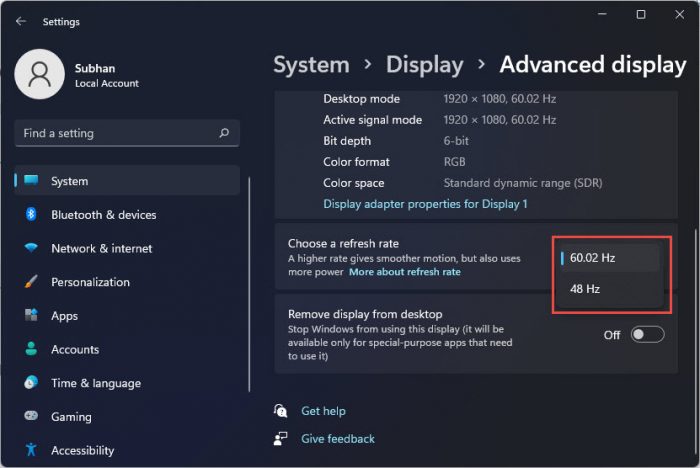
You will then be asked to confirm whether you wish to Keep Changes or Revert them. Check for a few seconds if the new configuration is higher than your speed and then select the relevant option.
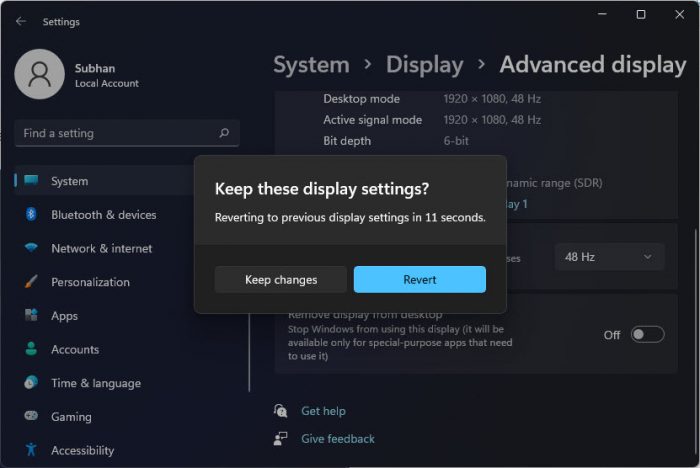
How to See FPS in Windows 11/10
Unlike the refresh rate, you cannot view the current FPS/frame rate in the Settings app. This is because you need to be running the game on your OS to see the live frames per second.
Thankfully, Microsoft introduced a feature in Windows 10 and 11 known as the Xbox Game Bar, which displays the stats of your hardware on top of the game display. Using the Performance widget of the Game Bar, you can see the FPS you are obtaining while gaming.
To view your FPS using the Xbox Game Bar, open the utility by pressing the Windows Key + G shortcut keys. You shall now see several widgets around the screen. On the Performance widget, click the FPS tab, and then click Request Access.
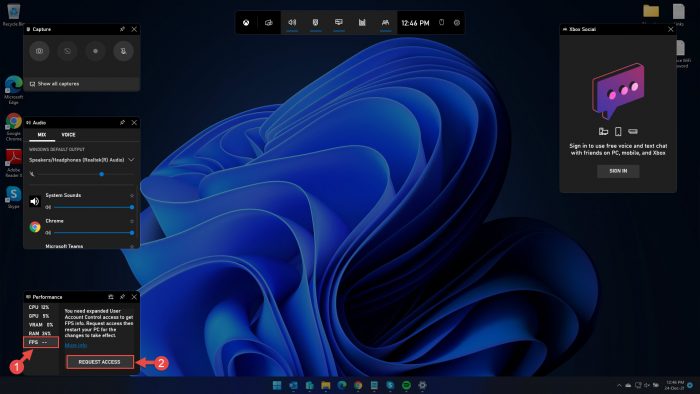
Now restart your computer for the changes to take effect. Once it reboots, run the game and then relaunch the Game Bar using the shortcut keys. Click on FPS in the Performance tab and you should now see the live FPS stats.
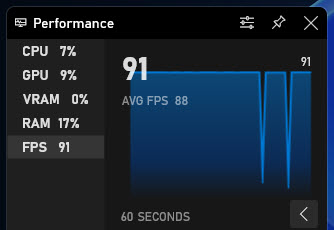
There are also other platforms available on the internet that could display your FPS stats on top of gaming screens, like Steam and Afterburner (RivaTuner) by MSI.
What Affects FPS
As we have mentioned earlier in this post, the frame rate you achieve on your display device(s) depends on many factors. Both hardware and software play an important role in delivering you that high FPS you were hoping for. From your game settings to your end-display device, everything is important.
Monitor
The number one thing that impacts your frame rate is whether your display device supports it or not. You will not achieve a higher frame rate if you are using a high-end computer with a potato monitor.
Graphics Processing Unit (GPU)
Similar to the monitor, a potato GPU cannot display faster frame rates, even if you have a 240 Hz monitor. Therefore, having a supported GPU is also important to achieve faster frames per second.
Driver
An outdated driver for GPU or display devices can become a bottleneck for higher frame rates. Newer drivers include more features to ensure reliability.
Cable
The type and quality of the cable you use to connect your PC to the display device plays a much larger role in controlling the FPS than you think. Each type of display cable has its own unique properties, as you will learn further in this blog post.
Game/Software Settings
All of that expensive hardware is useless if you have not configured it using the given settings. In-game settings and GPU settings (NVIDIA Control Panel) often have FPS configurations that you can alter to achieve higher frame rates.
Other settings can also affect the frames you are getting onto your monitor. Settings that require more video rendering, like shadows, HDR, etc., result in dropped FPS.
How to Increase FPS in Windows
If you are experiencing dropped FPS while gaming or performing high rendering tasks, you can perform any or all of the actions given below to fix the problem.
Note: Some of these actions cost money. Therefore, we suggest you only perform the ones that make sense to you. For example, upgrading your monitor from 144 Hz to 240 Hz display won’t improve FPS if you are using a VGA cable.
Update Graphics Driver
GPU and monitor manufacturers readily release driver updates that bring in support for the latest features and more stability, while enhancing performance. It may be possible that you are using an outdated driver which has not been updated for some time.
Although Windows automatically downloads and installs drivers through Windows Update, they are often also included as “Optional updates,” which need to be manually installed.
You can check your current driver version and then match it to the one available on the manufacturer’s website. If a newer version is available, install it, and then check if you see significant improvements in the frame rate.
Upgrade to DirectX 12 Ultimate
DirectX is a collection of Application Programming Interfaces (APIs) created to enhance your multimedia experience, which includes streaming, gaming, and audio to the maximum. DirectX 12 Ultimate is the latest version offered to users at the time of writing this post.
Check if your computer supports DirectX 12 Ultimate. If it does, you can upgrade to it using this guide and maybe your FPS drop issue will go away.
Drop Screen Resolution
Higher screen resolution means your GPU needs to process more pixels, hence more data, resulting in dropped FPS. Reducing your screen resolution may fix your problem. However, it will be a trade-off between pixels and FPS.
To reduce your screen resolution in Windows, navigate to the following:
Settings app >> System >> Display
Now scroll down and open the drop-down menu under Display resolution, and select a lower resolution than the current one.

You will then be asked to Keep changes or Revert to the old settings. If this resolution fixes your FPS problem, you can keep on it. If this does not address the issue, try another resolution setting.
Change Display Cable
The display cable is responsible for transferring the display data from your GPU to the display device. Its quality, as well as its type, play a significant role in the outcome of the display on your screen.
It may be possible that the current display cable is faulty, in which case it needs to be changed, or simply does not support the frame rate you are trying to achieve. Below is a detailed graph of the different display cable types, with their supported resolution and frame rates:
If you are using an inferior cable type, we suggest that you shift to a cable that supports the frame rate you are looking to achieve.
Upgrade Monitor
It may be possible that your display device does not support the refresh rate to display that many frames in a second. To confirm, visit the manufacturer’s website and check the specifications for your current monitor. If it does not support the refresh rate, maybe it is time to upgrade your monitor to a new one.
Note that if you do choose to upgrade your monitor, opt for one with the frame rate which is supported by your GPU as well unless you are planning to upgrade your GPU.
Upgrade GPU
It is not one of the optimized solutions, but if you want to go for a better gaming experience and none of the solutions have worked for you, upgrading your GPU may be the only option left.
Upgrading your GPU will definitely increase your frame rate. However, other supporting hardware will also be required, like a suitable display cable, supported monitor, etc.
Final Thoughts
Getting the optimal frame rate is a question of how much you are willing to spend. A greater frame rate would obviously mean a better experience, but is it worth it?
If you have already spent a fortune building your PC from scratch, but still did not achieve the desired FPS, it may not be worth investing in a new PC. Rather, customizing your settings to increase FPS may be the wiser way to go.
If you are confused about which frequency monitor to buy, we recommend that you choose the one that fits well with your budget, as high-end monitors cost ridiculously much.

